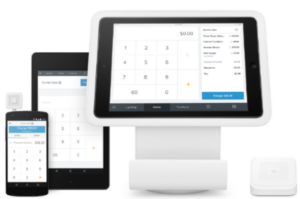There has been some news going around that some restaurant owners are eliminating gratuities (No tipping policy) and raising prices. Until your restaurant adopts this trend, here are some tips on how to better account and manage employee tips
Tipping is at the heart of a job as a waiter. In some ways, it’s how you measure the customer service and sales performance. Most people that work in the front of the house in a NYC restaurant make a significant amount of their total income from tips. Many times, more so in casual restaurants, waiters and bartenders can be tipped directly from the customer they served. These tips normally come in the form of actual cash left or an added payment onto a check via a debit or credit card charge. These employees may then share or give a portion of their tips or gratuities to food runners, bussers, hosts or other staff members that contributed time and effort during the shift.
Quick service restaurant environments differ in that tips are often shared evenly among all employees who were working together during a particular shift. These tips, as an example, could be collected as cash in a tip jar or, again, as an added payment on debit or credit card charges.
Now, if you are a restaurant owner or manager, do not make the mistake of thinking that your employees’ tips are of no concern to you. The IRS views gratuities as a form of income, so it is your responsibility to correctly report all the wages that your staff members earn. And, a lot of your college student employees probably rely on the supplemental income that these tips contribute too, so, as their employer, you should take all the necessary steps to make sure there is a system place, that compensates everyone properly.
What Exactly are Your Responsibilities as an Employer?
Firstly, business owners are required to accurately report each employee‘s wages to the IRS and withhold an employee’s respective income and FICA taxes. For this to happen, each of your employees needs to tell you all the tips that they earned so that you have an accurate record. The IRS Publication 531, Reporting Tip Income, is a helpful resource, that offers “best practices” for employees on keeping daily records, reporting tips to employers, and reporting tip income on federal tax returns. The best way to do this is to have each employee report, at end of shift what was earned in tips. The next step is to report this information and pay the withholdings to the IRS. National restaurant chains are also required to file a Form 8027, which outlines the total amount of tips collected and reported by the employees.
Best Practices for Managing Tips in Your Restaurant
It does not matter what system your restaurant has set up for accounting for tips, the process of tracking, reporting and paying gratuities to your staff can be a very time consuming and labor intensive job – and one that is almost setup for errors and missteps. Here are a few tips to better manage your restaurant’s tips, so that the IRS and all of your employees are happy campers.
 Technology as an Asset
Technology as an Asset
Advances in technology in the last decade have made it easier for restaurants to track tips using the cloud. Especially cloud-based Point-of-Sale (POS) systems, which can track far more than just the each tip amount on each transaction. These POS systems can also be set up to automatically import the data directly into your cloud accounting and payroll software, which then updates your general ledger and employee wage records. The cloud is changing how restaurant’s manage records by vastly improving operational efficiencies with automation.
The Importance of a Company Policy Handbook or Guidelines Regarding Tip Policies
Distributing gratuities can be complicated, and the penalties for not doing so can be catastrophic. There are different ways to share tips. So know the rules, and create and distribute a process that is transparent and easy to understand and follow for all staff members.
You may decide to allow your waiters to keep their gratuities, and then tip out a certain percentage to support staff. Alternatively, you may just set up a tip pooling or sharing system all together. Remember the key to an effective tip policy is having it match your specific type of restaurant business, and then work with the software tools you have at your disposal, like gratuity tracking features in your POS system.
Training all Employees on Your Tip Policy
Once your tip policy is set up, you should document and distribute it to every staff member when they get hired. Make sure it is clearly outlined with your restaurant’s process for handling tips and how exactly employees are expected to report them to the IRS. Also, to protect yourself and your business, your policy should include a grievance process when a problem may arise. Being transparent with all your policies will only build trust and prevent potential problems.
Restaurant Accounting Firms Can Help
By partnering with a restaurant specific bookkeeping and accounting company, you can have confidence that your financial records will be recorded and your taxes will be filed timely and correctly. Using a bookkeeping software system will help you categorize and automatically reconcile the transactions imported from your POS system and manage your payroll. Restaurant payroll and taxes are complicated, but it doesn’t have to be.
Partnering with a professional bookkeeper and accountant can ensure your financial records are properly maintained and your taxes are filed correctly and on schedule. Your bookkeeper can categorize and reconcile the transactions imported from your POS system and manage your payroll. Your accountant can prepare your taxes and provide strategic tax planning advice. Bookkeeping Chef is the leader in restaurant bookkeeping services in New York. We can help your restaurant properly account for gratuities, and even help you pick the right POS and payroll provider for your specific needs. [vc_row][vc_column][mk_button size=”large” bg_color=”#f7972a” url=”https://bookkeepingchef.com/request-a-quote/” target=”_blank” align=”center”]Get Started today Request a Free Consultation [/mk_button][/vc_column][/vc_row]
